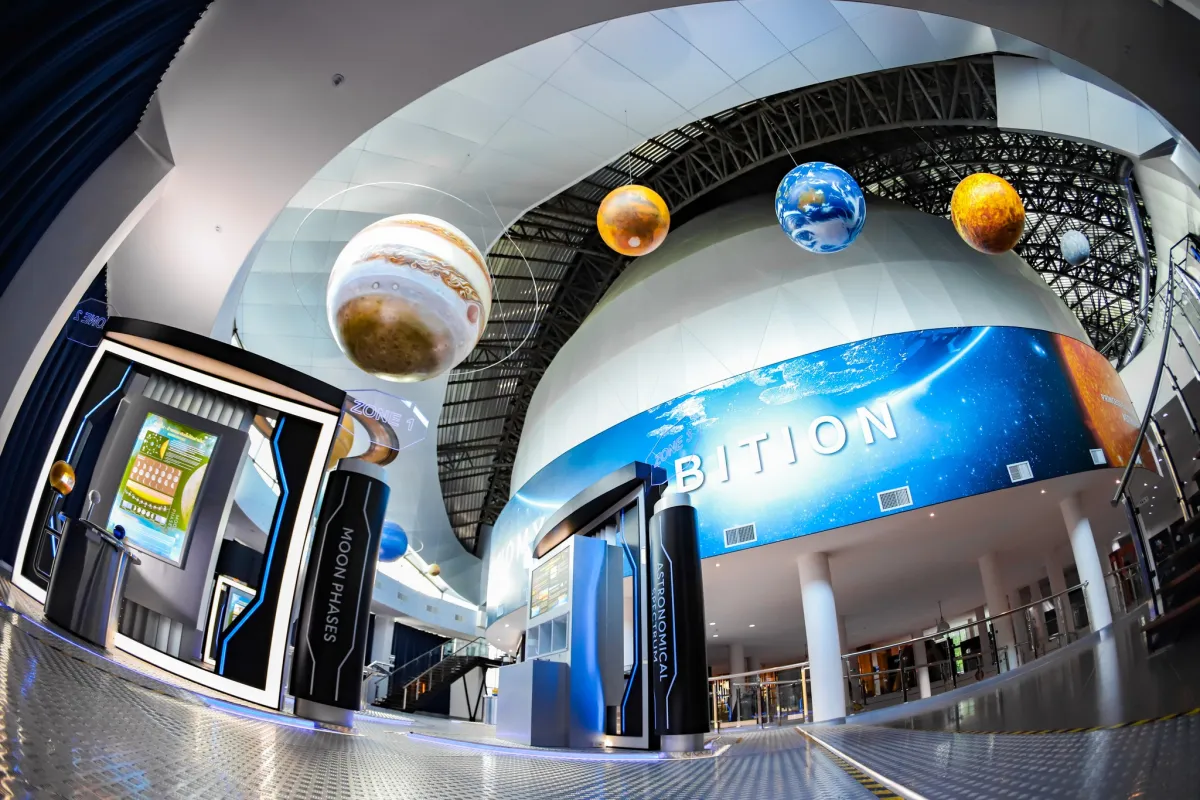
1. Sirindhorn Astronomical Park
It is the headquarters of the National Astronomical Research Institute of Thailand (Public Organization), a Chiang Mai-based agency overseen by the Ministry of Higher Education, Science, Research, and Innovation. Her Royal Highness Princess Maha Chakri Sirindhorn graciously granted royal permission to name it “Princess Sirindhorn AstroPark,” with the goal of making it a place to support operations in accordance with the four main missions: astronomy research, development of astronomy technology, academic services, and astronomy communication, connecting scientists from all over the world, making Thailand a proud leader in astronomy in Southeast Asia.
The Sirindhorn Astronomical Park contains the following facilities:
The astronomy exhibition, on the other hand, is an interactive exhibition that focuses on self-learning through equipment and videos on how to learn, as well as having staff to provide additional advice. In the future, the exhibition's content and format will be adjusted to achieve diversity in learning as well;
4. The laboratory building includes an engineering laboratory building for astronomical equipment/ instrument research, design, and development.
The Astronomy Exhibition is open every day (except Monday): Tuesday-Friday from 9:00 a.m. to 4:00 p.m. Saturday and Sunday from 10:00 a.m. to 5:00 p.m. Admission is free of charge.
As for the planetarium showtimes, it is also open every day except Mondays: Tuesday-Friday at 11:00 and 2:00 p.m.; Saturday at 11:00 a.m., 2:00 p.m., and 5:00 p.m.; and Sunday at 11:00 a.m. and 2:00 p.m.. The show is 1 hour long; admission fee is 50 baht for adults, 30 baht for students, with a reservation at least 1 day in advance, up to 14 days from 9:00 a.m. to 5:00 p.m.
The NARIT Public Night stargazing activity is available every Saturday of November to May from 6:00 p.m. to 10:00 p.m., which can be attended free of charge.
Those who are interested in visiting, ask for more information at Sirindhorn Astronomical Park: 260 Moo 4, Don Kaeo Subdistrict,
Mae Rim District, Chiang Mai Province 50180.
Phone: +66 5312 1268 / 9 or +668 4088 2261
Line ID: @narit.astropark
Website: https://www.narit.or.th/index.php/sirindhorn-astro-park